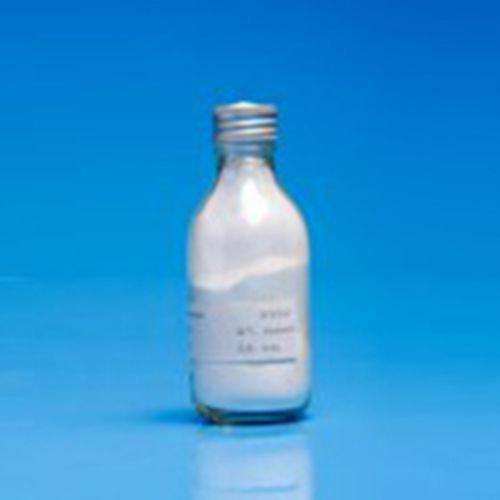With the continuous development of blood purification technology,
continuous research and development of artificial blood vessels, and
increasingly mature surgery, the number of patients undergoing the artificial
arterio venous fistula (AVG) surgery has gradually increased in recent years.
However, acute thrombosis and vascular stenosis are the most common
complications of AVG due to repeated puncture and compression. Here I would like
to share with you the successful thrombolytic treatment of urokinase in our
center as follows:

Clinical data:
There were 6 patients, including 4 males and 2 females, aged 49 ~ 76 years
old. The primary disease was chronic glomerulonephritis in 2 patients and
diabetic nephropathy in 3 patients. Anca-related vascutitis occurred in 1
patient, and 6 patients underwent hematopoietic tube transplantation due to
their poor vascular conditions. The patients were treated with artificial
vascular puncture dialysis 15 days to 3 months after the operation,
respectively, and the internal fistula murmur disappeared through auscultation.
The blockage time of the internal fistula was 10 ~ 72 h, the surface of the
internal fistula failed to touch the vessel tremor, no blood flow murmur was
detected, the thrombosis was confirmed by color ultrasound examination, and its
location and length were marked.
Methods of thrombolysis:
Routine biochemical examination of fibrinogen (Fbg), prothrombin time (PT),
thrombin time (TT), partial thrombin activation time (a PTT), biochemical
indicators of liver and kidney function before and after treatment, and
observation of adverse reactions (rash, fever, bleeding and embolism, etc.).
Combined with auscultation, palpation and b-ultrasound localization of blood
vessels, the site of thrombosis was identified, and a total of 2 points,
including the arterial end of anastomosis and the venous end of anastomosis,
were selected for cardiac puncture. As far as possible to reduce damage and
bleeding, using a small needle injection, respectively, with no. 5.5 the scalp
needle connection 5 ml syringe with sterile saline solution, on the bevel
puncture, the needle puncture has frustrated feeling and see h. along the
direction of blood vessels into the needle again after a few, properly fixed
after withdrawing have h., each point of prescribed for 0.9% sodium chloride
injection 50 ml 200000 U + urokinase, respectively connected to the micro pump
intravenous injection, typically 2 to 3 hours after injection. The total amount
of urokinase depends on the thrombolytic effect, and generally does not exceed
500,000 U at 12h. Results urokinase thrombolysis was performed 8 times in 6
patients, 4 patients were treated with the first thrombolysis, and the other 2
patients were treated with more than 3 discontinuations. After thrombolytic
treatment, the fistula was transfixed within 4-12h with a success rate of 100%.
Thrombolytic therapy was mainly performed by simultaneous puncture of the
arteries and veins, and there was no case of pulmonary embolism, cerebral
embolism or other complications.
Notes for thrombolysis:
1. Recanalization of fistula is closely related to occlusion time. Early
thrombolysis is the key to treatment.
2. Strictly control the drip rate, observe the condition closely, and
observe whether there is bleeding tendency after thrombolysis, such as skin,
sclera, teeth, puncture point, digestive tract, etc.; Report any problems to the
doctor and deal with them properly.
3. During thrombolysis, patients should stay in bed absolutely and avoid
getting out of bed. The potential and most serious complication of thrombolytic
therapy is pulmonary embolism. During nursing, the patient's condition was
observed closely, subjective feelings were asked, and clinical manifestations of
embolism such as cough, chest tightness and hemoptysis were observed. In the
process of thrombolysis, defibrillator, ecg monitor, atropine, lidocaine and
other drugs should be prepared for emergency use.
Health guide:
Encourage patients to take the initiative to participate in the management
of blood vessels, improve the ability of self-protection, monitor the blood
vessel pulse 5-6 times a day, and go to the hospital immediately if the tremor
disappears or weakens, the murmur disappears, the blood vessel collapses and
stiffens. The compression time of internal fistula after dialysis should not be
too long, and finger pressure (15 ~ 20 minutes) is advisable. For patients prone
to hypotension during dialysis, water should be controlled and dry body weight
should be appropriately increased. For patients with hypercoagulability, the
dosage of anticoagulant should be adjusted appropriately, and antithrombotic
drugs should be taken as prescribed by the doctor during the dialysis
period.
Different from the internal fistula, the artificial hematopoietic fistula
is not easy to repair after the fiber damage in the tube wall, and only relies
on the hyperplasia of connective tissue around the tube to fill it. Therefore,
preventing complications and prolonging its service life are very important to
improve patients' quality of life.
Locally as a kind of relatively high concentrations of urokinase
thrombolysis treatment of minimally invasive treatment method, simple, safe,
effective and economic, etc., can be specific to activate fibrinolytic enzyme,
hydrolysis fibrin to dissolve thrombus, possesses the advantages of short
half-life, the price is cheap, can make the thrombolysis more fully, reduce the
embolic loss made significant curative effect in clinic, is human hematopoietic
tube fistula in treatment of thrombosis.